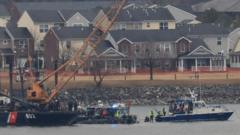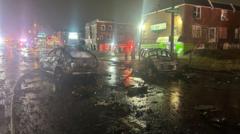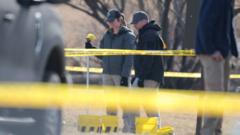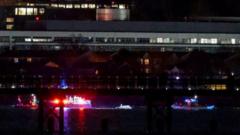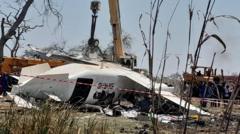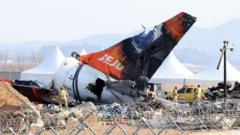The tragic plane crash involving Jeju Air has raised critical questions about airline maintenance practices, with a focus on the thorough inspections and repair processes essential for safe aviation.
**Unraveling the Mysteries of Airline Maintenance in Light of South Korea's Tragic Crash**

**Unraveling the Mysteries of Airline Maintenance in Light of South Korea's Tragic Crash**
Amid the investigation into a catastrophic airplane crash in South Korea, experts highlight the importance of aircraft maintenance protocols.
In the wake of the recent plane crash in South Korea, which resulted in the loss of 179 lives, questions surrounding aviation maintenance practices have emerged. The airline involved, Jeju Air, stated that all pre-flight checks had shown no issues with the Boeing 737-800 aircraft, which was 15 years old and maintained a clean accident record until this tragedy. While investigations are ongoing to determine the cause of the crash, the role of aircraft maintenance in aviation safety is under increased scrutiny.
Experts emphasize that the history of the aircraft's repairs, particularly work done by overseas maintenance firms, will be a focal point in the investigation. Regular inspections, repairs, and replacements are a fundamental aspect of maintaining commercial jets. This intricate process involves various stakeholders, including airline executives, pilots, mechanics, and regulatory authorities.
Airline employees conduct frequent line maintenance to identify any potential issues between flights. Pilots perform essential visual checks and rely on mechanics for periodic inspections. Mechanics are trained to troubleshoot any visible problems, often providing immediate fixes or temporary solutions while scheduling further assessments. Additionally, every component of an aircraft undergoes meticulous inspection and maintenance according to a structured schedule based on flight hours, the number of legs flown, and the time in service, guided by international aviation regulations which often align with the standards set by the Federal Aviation Administration (FAA) in the United States and its European counterparts.
As the investigation unfolds, the aviation community remains focused on ensuring that maintenance practices evolve and adapt to enhance passenger safety, seeking to understand the full story behind the unfortunate event that has captured the world's attention.
Experts emphasize that the history of the aircraft's repairs, particularly work done by overseas maintenance firms, will be a focal point in the investigation. Regular inspections, repairs, and replacements are a fundamental aspect of maintaining commercial jets. This intricate process involves various stakeholders, including airline executives, pilots, mechanics, and regulatory authorities.
Airline employees conduct frequent line maintenance to identify any potential issues between flights. Pilots perform essential visual checks and rely on mechanics for periodic inspections. Mechanics are trained to troubleshoot any visible problems, often providing immediate fixes or temporary solutions while scheduling further assessments. Additionally, every component of an aircraft undergoes meticulous inspection and maintenance according to a structured schedule based on flight hours, the number of legs flown, and the time in service, guided by international aviation regulations which often align with the standards set by the Federal Aviation Administration (FAA) in the United States and its European counterparts.
As the investigation unfolds, the aviation community remains focused on ensuring that maintenance practices evolve and adapt to enhance passenger safety, seeking to understand the full story behind the unfortunate event that has captured the world's attention.

